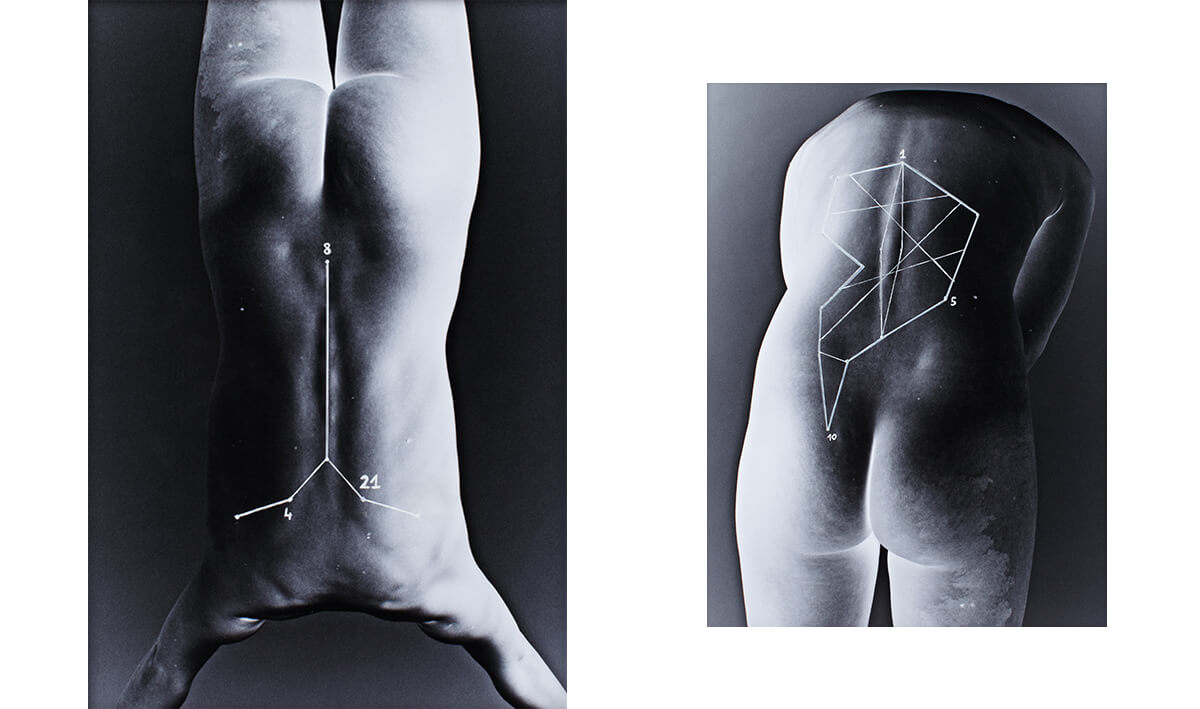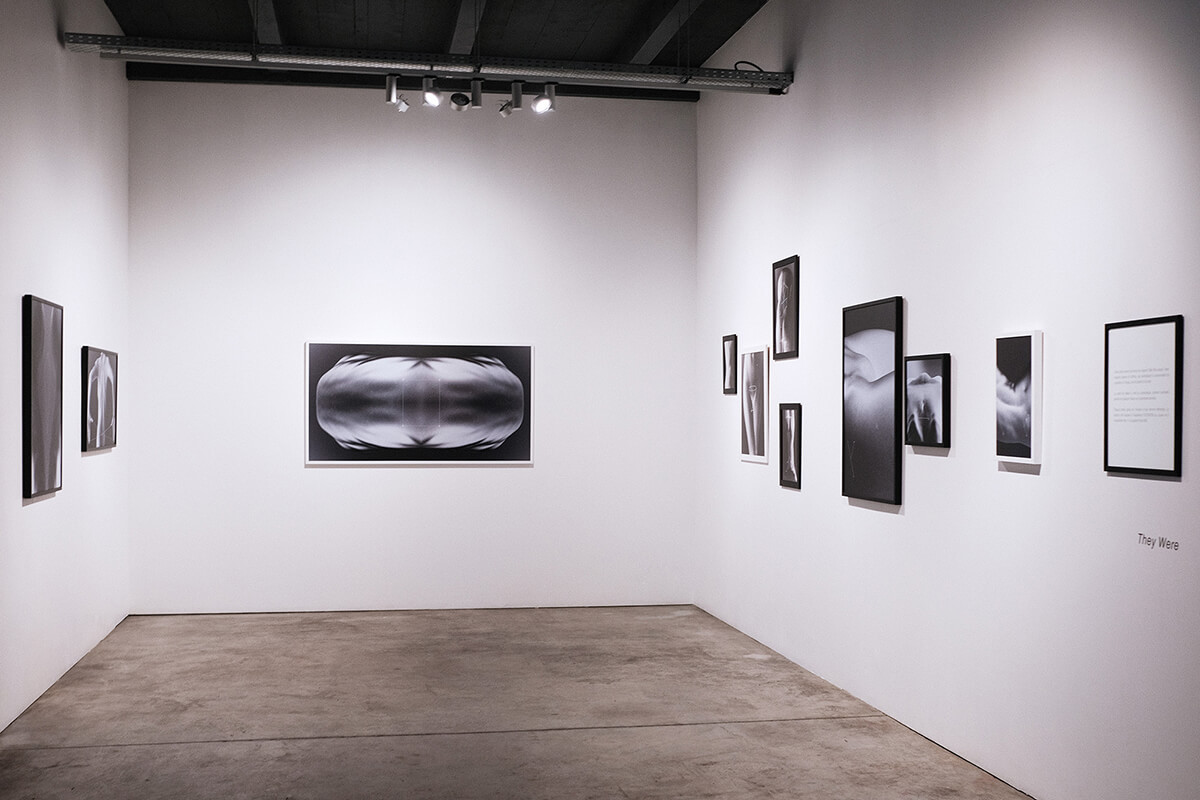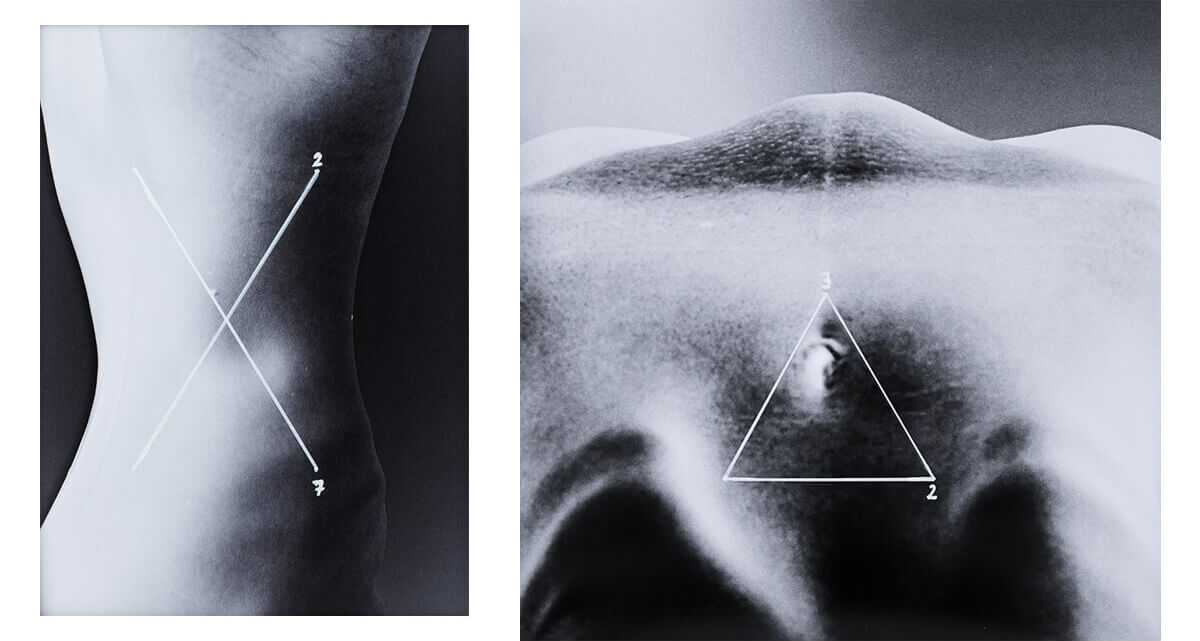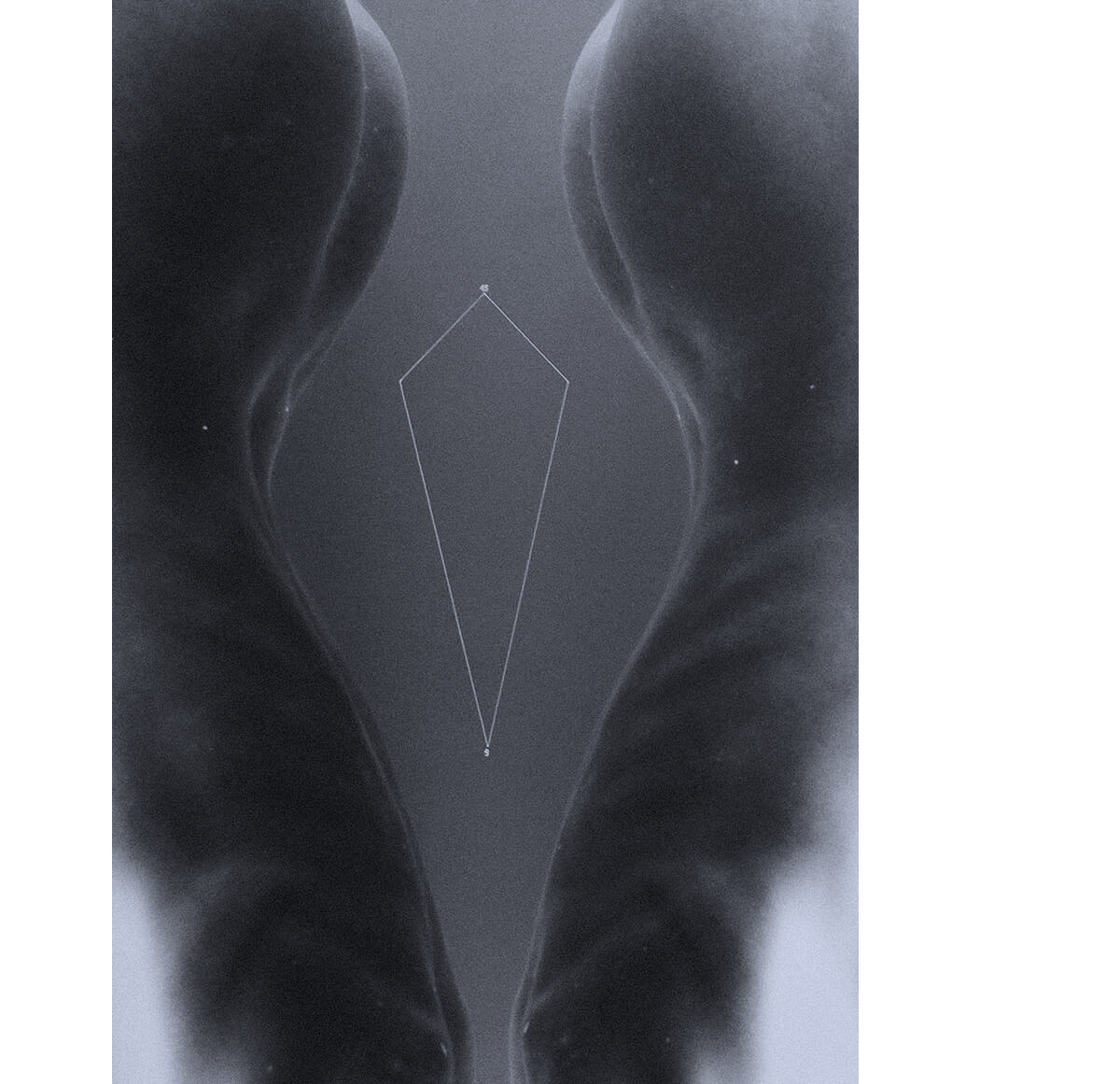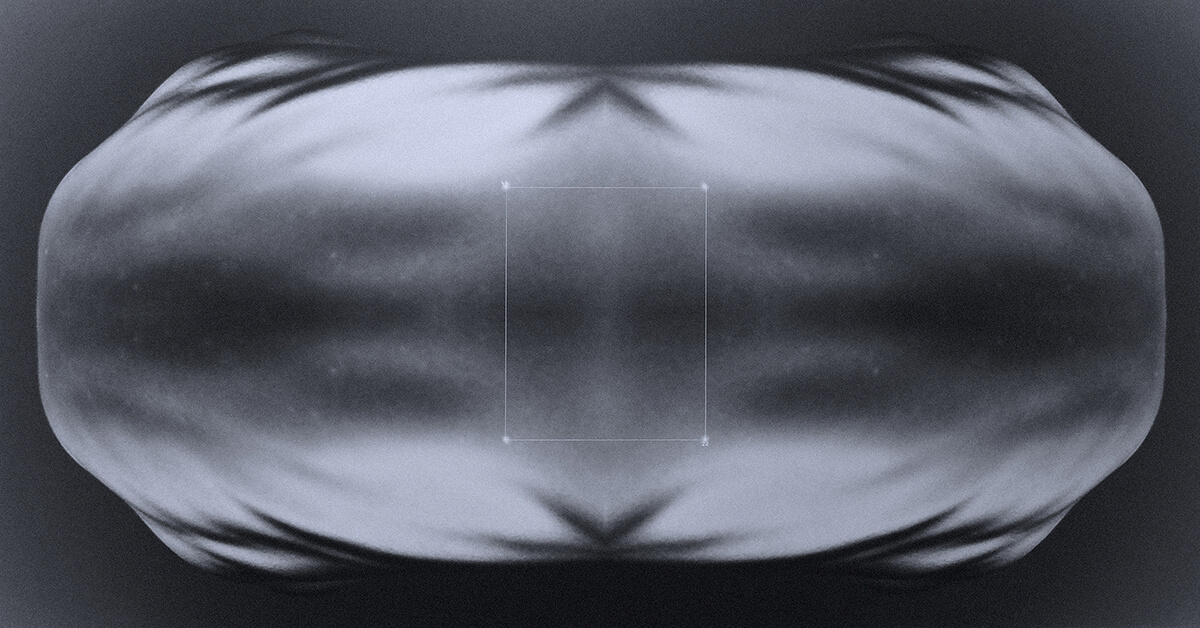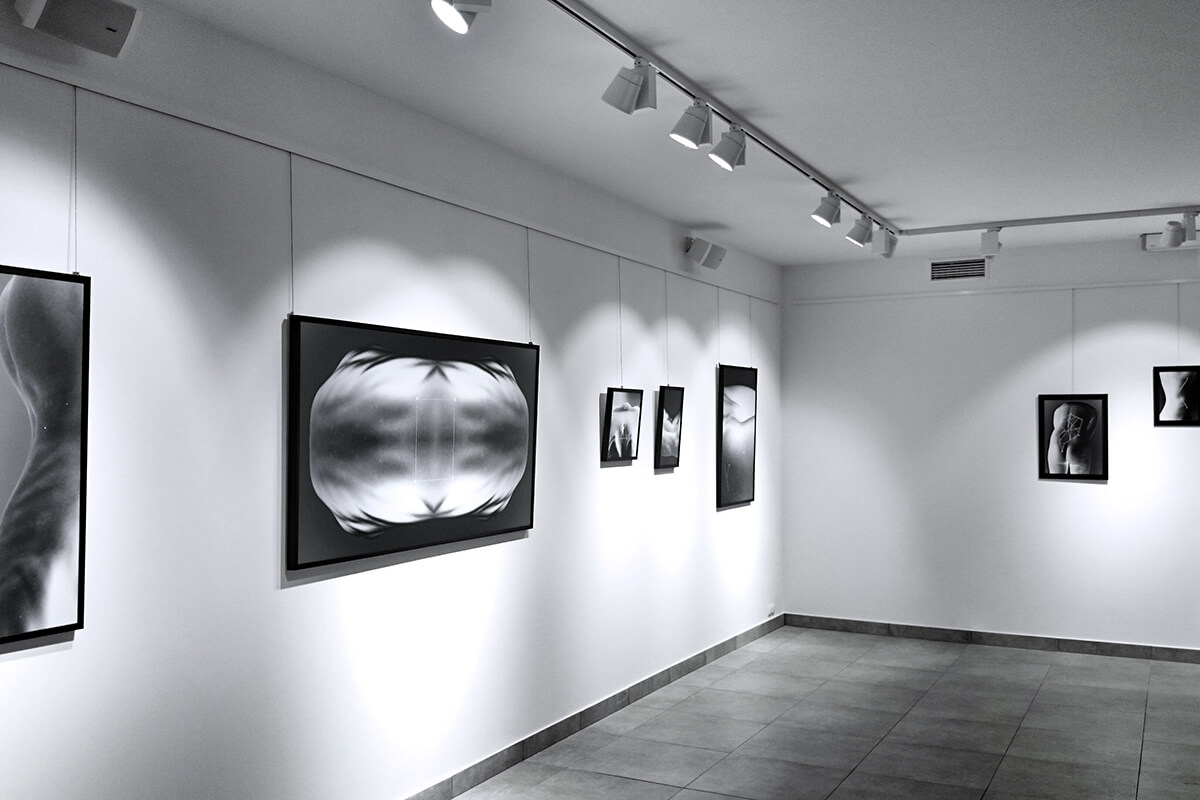“They were”
The cycle „They Were” boils down to the Man Ray-like form of negatives onto which signs and numbers symbolising the character of the depicted figure have been painted by hand. The point of departure of this abstract, surrealist cycle was numerology and the symbolism of geometry used to define the portrayed person, as well as to bring them closer to the viewer. The negative contributes to the unrealness of the memories of them. Painting on the works is a performative action where the author, so to say, marks the portrayed women, making each work unique in the process.
“They were” individual exhibition in La Maison de la Photographie / Lille, France 2017
„They were” in Louvre on fotofever photography art fair – Paris 2014
“Borys Makary is not satisfied with just photographing the body and the negative inversion of the frames such obtained. On the transformed, sometimes multiplied forms appear geometric drawings, lines and symbols, defining their additional, internal structure. As a result, the artistic and sculptural fragments of bodies obtain a mathematical skeleton; the irregularity of the body is enriched with an internal foundation of geometry. In many cases, the shapes drawn by the Cracovian photographer resemble zodiac constellations. Indeed, there are also white points on the black bodies (birthmarks, moles or photograph defects) which bring them closer to the representation of the starry night-time sky, a peculiar basis of astrological thinking. The similarity to astrological shapes allows identification of the modus operandi of Borys Makary who – as it once used to be – seeks to impose order on chaos, to structure the area, which defies rational cognition, in an effort to understand something incomprehensible and illogical.”
Witold Kanicki – artist critic
“When defining a given woman’s character, the artist applies numerology and private symbolism arbitrarily. Works in various sizes are always in negative to make memories less realistic. The work 2, 3, triangleadapts contrariwise the ideal of the triangle symbolism and a sign from the Christian iconography to a female belly button. This action has a surrealist meaning. Another very interesting photograph is 3, 6, 11, gobletwhere the drawing on the body seems to be spatial. 9, 45 attracts attention by its mirror reflection and turning upside down which results in its becoming not only metaphoric and slightly ironic – as the female buttocks resemble shaven heads – but also formally interesting. In the middle of the composition there is a sign which may be associated with a coffin. The photograph 44, 22 is the culmination of the cycle as the body(-ies) has acquired an abstract form, irrelevant to physicality or femininity. In its middle an elongated rectangle has been placed as a sign of perfect balance. 0, 5, 66, reverse Y is a surprising work – in a positive sense – where a private body part has been enigmatically compared to the sign Y. Both 7, 46 and 26 are very interesting where two crossing lines stretch between the hands and join in the number 26, a metaphor of the woman and her body – and all this originally framed.”
Krzysztof Jurecki – artist critic
“They were” in Ney Gallery / Warsaw 2015
